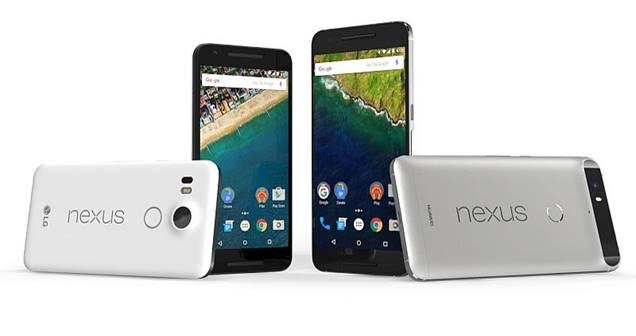This week, we’ll turn our attention to the world of smart devices and the companies that make and distribute them. Before we do, however, a quick note on the Federal Communications Commission’s first net neutrality test.
CNS denied peering status by the FCC
At the end of June, we covered in detail the first net neutrality complaint brought by Commercial Network Services (more here). This week, the FCC sent a note to CNS informing them “in this instance we regret that you were not satisfied with attempts by FCC staff to facilitate a more satisfactory resolution of the underlying issue. At this point, you might want to contact the company directly to see if you and the company can arrive at a resolution that is more acceptable to you.”
While many interconnection disputes will be resolved because of the threat of FCC intervention (see Cogent CEO’s comments made at a recent investor conference here), the fact that the FCC has to get involved in the first place is ludicrous. Hopefully the Peering Department clarifies some rules and spends their budget on more pressing matters (like a successful 600 MHz auction).
It’s still an Android world
How consumers purchase smartphones has changed dramatically over the past couple of years. Gone are the traditional carrier-subsidized views of $299/$199/$99/free in exchange for a two-year contract. They have been replaced by phone payment commitments – leases or installment loans. To add a twist, these plans are beginning to be distributed by the two dominant smartphone suppliers, Apple and Samsung.
To ease the pain of these commitments, each wireless carrier has implemented some sort of swapping program. With JUMP On Demand, T-Mobile US allows customers to upgrade up to three times per year with a replacement trade-in (in good condition). In August, Sprint announced its iPhone for Life program, which allows customers to upgrade to the latest Apple model with replacement trade-in (in good condition). Even Verizon Wireless recently announced a trade-in program that allows customers to upgrade if half of the device’s purchase price has been paid off – which should happen around Month 13 – and with replacement trade-in (in good condition).
The “condition” refrain in the previous paragraph is intentional. If the device has any sort of damage, it’s likely that subscribers will be liable for additional upgrade payments. Good news for OtterBox and a “buyer beware” notice as wireless carriers are highly dependent on a high-quality device return.
Devices are becoming increasingly detached from the networks and technologies that support them. Consider the fact that Apple has three iPhone 6s/6s Plus models that cover the entire world, and one of these models is exclusively for China (more here). In the U.S., the same phone model family supports Sprint, T-Mobile US and Verizon Wireless, although T-Mobile US uses a GSM version of the device while Sprint and Verizon Wireless use the CDMA model. Gone are the days of carrier-specific devices: They have been replaced by an expectation that devices should be carrier neutral. This expectation is going to be reinforced by retailers (specifically Apple) who want to deliver the best network experience for the customer.
This development places extra pressure on wireless carriers’ network quality and plan value. As networks continue to grow and change, additional requirements are made of the smartphone manufacturers. New (and likely faster) networks are not compatible with older device types and this places increasing pressure on the value of returned devices. We are in the middle of a network-device-plan tornado and those who claim that they can accurately predict this storm’s aftermath are sorely mistaken.
Who has the advantage? Some observations from the October 2015 snapshot
As long-time readers know, twice a year (before summer and before the holiday selling season) we take a look at how the carriers are positioning their handset lineups. Here are a few observations from October’s snapshot:
1. Samsung has a stock-keeping unit for every high-end smartphone need.
Samsung is packing six to eight devices into the over $20 per month segment for every carrier but Sprint. Take a look at the T-Mobile US column to see the method to their madness:
Device Name – Monthly Cost
Samsung Galaxy S6 Edge + – $32.50
Samsung Galaxy S6 Edge – $28.34 ($4.16 cheaper than the S6 Edge +)
Samsung Galaxy S6 – $24.17 ($4.17)
Samsung Galaxy S5 – $20.00 ($4.17)
Samsung Galaxy Note 5 – $29.17
Samsung Galaxy Note 4 – $22.92 ($6.25 cheaper than the Galaxy Note 5)
Interestingly, the difference between the iPhone 6s and the iPhone 6s Plus is also $4.16, as is the difference between the iPhone 6 and iPhone 6 Plus. In the end, Samsung needs to make a simple decision: Will curved or flat edges become the high-end smartphone standard? Having both is too much for most users and likely to take away from selling time vs. other Android manufacturers. This abundance of variety is most apparent with the AT&T Mobility column – eight devices above $20 per month – definitely an overkill that could impact overall market share.
2. No Apple device below $10 per month.
In the subsidy world, each wireless carrier had a “go-to” offer at the holidays – upgrade your contract and get a free iPhone. That option is no longer available with new Apple devices, although iPhone 5c refurbished devices are available at or below $10 per month at most of the carriers we surveyed.
Given this is the first full holiday selling season without subsidized devices, it will be interesting to see how the lack of a price leader impacts iPhone 5s sales. With all of the carriers aggressively marketing the iPhone 6s, the short-term impact could be negligible, but with many Android and Windows devices coming in at price points lower than the Apple 5s or 5c, their entry-level value is in question.
3. BlackBerry and Microsoft/Lumia continue to be crowded out of the “big four.”
As of the date of this snapshot, Microsoft’s devices carried a low-end focus, with five of the six devices offered on carrier websites coming in at $10.50 per month or less. This also marks the second straight report in which Microsoft devices are not being sold through T-Mobile US.
Last Tuesday, Microsoft announced three new devices (950, 950 XL and 550) in an effort to shake up their position in the industry. There’s a good summary from Ars Technica here. Rather than introducing a version of the HTC M9 or Samsung (Ativ), Microsoft has chosen to distribute these devices – unlocked – directly to customers through their own stores. (According to Wikipedia, there are 116 Microsoft stores globally with 106 in the U.S.) CNet also is reporting AT&T Mobility will begin distributing the 950 and 950 XL exclusively in November.
Hopefully Microsoft can gain traction in the marketplace – relying on AT&T Mobility might have worked a decade ago, but the Nokia 1020 launch on Easter weekend in 2012 should have taught them something. What’s amazing about this is the Microsoft and T-Mobile US offices that could strike an agreement are less than six miles apart. As T-Mobile US CEO John Legere indicated in his tweets on the topic, Microsoft and T-Mobile US would make a terrific pair in the enterprise market and lend credibility to Microsoft in consumer markets.
Then we have the soon-to-be-launched BlackBerry Priv (which stands for Private), an Android device (Lollipop version), which runs BlackBerry’s legendary e-mail client. There’s been no big unveiling of the device, yet rumor has it that a launch is expected later this month. It will have a slideout keyboard – bringing back horrible memories of the Torch, which is what I wanted to do to the device while testing apps on it – and will be flush with security features. A leaked picture from BlackBerry is above (from the picture, it appears to have a lot of Nokia Lumia features), but it is unclear if or how carriers will distribute the device. Selling BlackBerry in AT&T and Verizon retail stores has been hard; selling a BlackBerry that runs on Android, even for the most talented retail sales associates, will be even harder.
4. Sprint’s limited time leasing offers.
When the leasing program was announced at Sprint last fall, there were only a few devices covered. This number grew to 13 devices in May, led by Sprint’s iPhone 6 and 6 Plus models, but including others such as the LG Flex 2 and LG G3. While dropping the number of leased models from 13 to 10 is not significant in and of itself – total devices offered by Sprint dropped by six to 27 – the removal of leasing options for the Samsung Galaxy S5, Galaxy S5 Sport, LG G Flex 2, LG G3 and iPhone 5s models is telling. Remember, in a leasing option, Sprint takes the resale risk, and, as [non-Apple] devices age, the resale risk is too great. Sprint’s lease discipline is showing.
There’s a lot more we could talk about. Google released the details of its new Nexus flagship phones, the 5X (built by LG) and the 6P (built by Huawei), and it appears that they will be distributed exclusively through the Google Play store (at an attractive $379 and $499, respectively). More on the devices here and on Google Play distribution here. These devices can be activated on Google Fi, its mobile virtual network operator with T-Mobile US and Sprint.
In addition, we have not touched on how Verizon Wireless’ simplicity focus has impacted handset pricing, and how its growth of devices from 28 in May, to 31 in October has really been at the less than $10 per month level (presumably to migrate feature phone subscribers to smartphones).
The smartphone world continues to change. Carrier neutrality is in and subsidies are out. Faster devices should lead to increased data consumption and trade-up programs should lead to higher levels of refurbished inventories. Market consolidation continues, although cash-rich Microsoft and Google would like to rebalance the equation. While the carriers used to control the fate of smartphone manufacturers, the tables appear to be turning. More headlines will be made after the 2015 holiday season.
Jim Patterson is CEO of Patterson Advisory Group, a tactical consulting and advisory services firm dedicated to the telecommunications industry. Previously, he was EVP – business development for Infotel Broadband Services Ltd., the 4G service provider for Reliance Industries Ltd. Patterson also co-founded Mobile Symmetry, an identity-focused applications platform for wireless broadband carriers that was acquired by Infotel in 2011. Prior to Mobile Symmetry, Patterson was president – wholesale services for Sprint and has a career that spans over 20 years in telecom and technology. Patterson welcomes your comments at jim@pattersonadvice.com and you can follow him on Twitter @pattersonadvice. Also, check out more columns and insight from Jim Patterson at mysundaybrief.com.
Editor’s Note: The RCR Wireless News Reality Check section is where C-level executives and advisory firms from across the mobile industry share unique insights and experiences.




